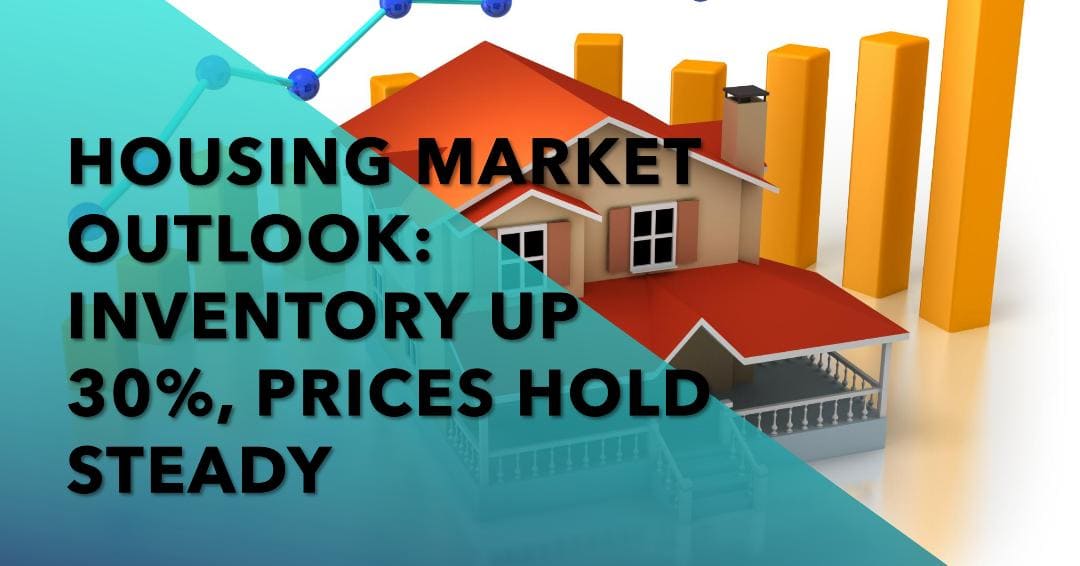The housing market is a moving target, and navigating it successfully requires staying informed. Fortunately, recent data from Realtor.com sheds light on current trends, giving us a clear picture of factors like inventory levels, pricing strategies, and how sellers are behaving.
One of the most notable trends observed in the recent data is the 30.4% increase in the number of homes actively for sale compared to the previous year. This marks the sixth consecutive month of growth, indicating a significant shift in the market dynamics. Additionally, the total number of unsold homes, including those under contract, has surged by 20.0% year-over-year, reflecting a robust level of activity within the market.
April saw a 12.2% uptick in the number of newly listed homes compared to the same period last year, suggesting a heightened level of activity among sellers. Despite this increase in inventory, the median price of homes for sale remained stable at $430,000, showcasing a degree of resilience in the face of changing market conditions.
While the median list price did not experience a significant increase, the cost per square foot continued to rise, driven by factors such as rising mortgage rates. This has led to a scenario where the affordability gains witnessed earlier in the year have been overshadowed by a resurgence in housing costs. The data also highlights the impact of inflation and employment trends on mortgage rates, underlining the interconnected nature of economic factors in shaping the housing market.
A closer examination of regional trends reveals interesting dynamics, particularly in the South. Sellers in this region have been listing homes at a higher rate compared to the previous year, leading to an increase in the availability of affordable housing options. However, despite this positive trend, the time homes spend on the market is gradually approaching pre-pandemic levels, signaling a potential shift in the balance between supply and demand.
The trend of increasing inventory persisted in April, with 30.4% more homes actively for sale compared to the same period last year. This sustained growth marks the sixth consecutive month of annual inventory expansion, indicating a positive trajectory within the housing market. Notably, the inventory of homes actively for sale during the first four months of the year reached its highest level since 2020, signifying a notable shift in supply dynamics.
Despite the improvement in inventory levels compared to recent years, there is still ground to cover to reach pre-pandemic norms. Inventory in April was 35.9% lower than typical levels observed between 2017 and 2019. However, this represents a slight improvement from the previous month's 37.9% gap, suggesting a gradual return to equilibrium. As inventory continues to inch closer to historical averages, the market is showing signs of resilience and recovery.
An intriguing aspect of the recent data is the notable growth in homes priced between $200,000 and $350,000. This segment witnessed a remarkable 41.0% increase in inventory compared to the previous year, surpassing even the high growth rate observed in the preceding month. This surge in availability is primarily driven by the emergence of smaller and more affordable homes, particularly in the Southern region.
The South has emerged as a focal point for increased housing availability, with a significant uptick in inventory observed in this region. This trend aligns with broader market dynamics, as sellers in the South have been listing homes at a higher rate compared to other regions. The influx of affordable housing options in the $200,000 to $350,000 price range has contributed to a more balanced supply-demand equation, offering buyers greater choice and flexibility.
The latest data sheds light on the performance of pending listings, a key indicator of future market activity. In April, the number of homes under contract but not yet sold increased by 6.3%, mirroring the growth rate observed in the previous month. This steady uptick in pending listings comes against the backdrop of rising inflation and mortgage rates, fueled by expectations of a delayed adjustment to the primary policy rate by the Federal Reserve.
Looking ahead, there are indications that the pace of growth in pending listings may taper off in the coming months. This could potentially translate into a slowdown in existing-home sales, following a 4.3% dip recorded in March. The interconnected nature of pending sales and overall market performance underscores the importance of monitoring these early indicators to anticipate future trends accurately.
In a promising development for the market, sellers exhibited increased activity in April, with newly listed homes surpassing last year's levels by 12.2%. This sustained growth in listing activity marks the sixth consecutive month of expansion, signaling a shift from the prolonged period of declines observed previously. Notably, a significant proportion of sellers, approximately three-quarters, have expressed a desire to purchase a new home, indicating a nuanced response to prevailing market conditions.
However, the market may face headwinds in the form of elevated mortgage rates in the coming months. If rates remain high, there is a possibility of reverting to the pattern of limited inventory that characterized the market in recent years. For buyers, this could translate into a more challenging environment for finding suitable properties, particularly as summer approaches.
Bottom Line: The housing market remains a complex dance with the economy. While a rise in listings and seller activity hints at a shift, mortgage rates hold the key to the market's next move. Staying alert and flexible will be crucial for both buyers and sellers to navigate this ever-changing landscape.




